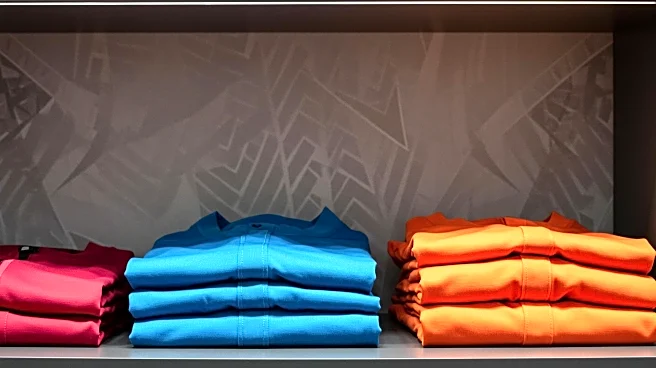Rapid Read • 8 min read
Gildan Activewear Inc. has announced a significant acquisition of HanesBrands Inc. in a deal valued at $2.2 billion, comprising both cash and stock. This strategic move is set to double Gildan's revenues to approximately $6.9 billion on a pro forma basis, enhancing its position as a leading player in the global apparel market. The acquisition is expected to provide Gildan with increased scale and supply chain capabilities, particularly in Central America and the Caribbean, where both companies have substantial manufacturing operations. The deal is anticipated to be immediately accretive to Gildan's earnings, with projected annual cost synergies of $200 million within three years.
AD
This acquisition marks a pivotal moment in the fashion industry, particularly against the backdrop of ongoing trade tensions and tariffs. By expanding its scale, Gildan aims to strengthen its market position and potentially benefit from nearshoring advantages, as tariffs could make Central American manufacturing more cost-effective compared to Southeast Asia. The deal also reflects a broader trend of consolidation in the apparel sector, as companies seek to mitigate the impacts of trade disruptions and rising costs. Investors have responded positively, with Gildan's shares rising significantly following the announcement.
As Gildan integrates HanesBrands, the focus will be on realizing the anticipated cost synergies and leveraging the combined company's enhanced capabilities. The fashion industry may see further consolidation as other companies look to similar strategies to navigate the challenging economic landscape. Stakeholders will be closely monitoring the impact of this acquisition on market dynamics and consumer prices, especially in light of potential tariff increases.
The acquisition highlights the ongoing challenges faced by the fashion industry due to geopolitical factors and changing consumer expectations. Companies are increasingly pressured to adapt their supply chains and business models to remain competitive. This deal could set a precedent for other apparel companies to pursue similar strategies, potentially leading to a more consolidated and resilient industry landscape.
AD
More Stories You Might Enjoy










